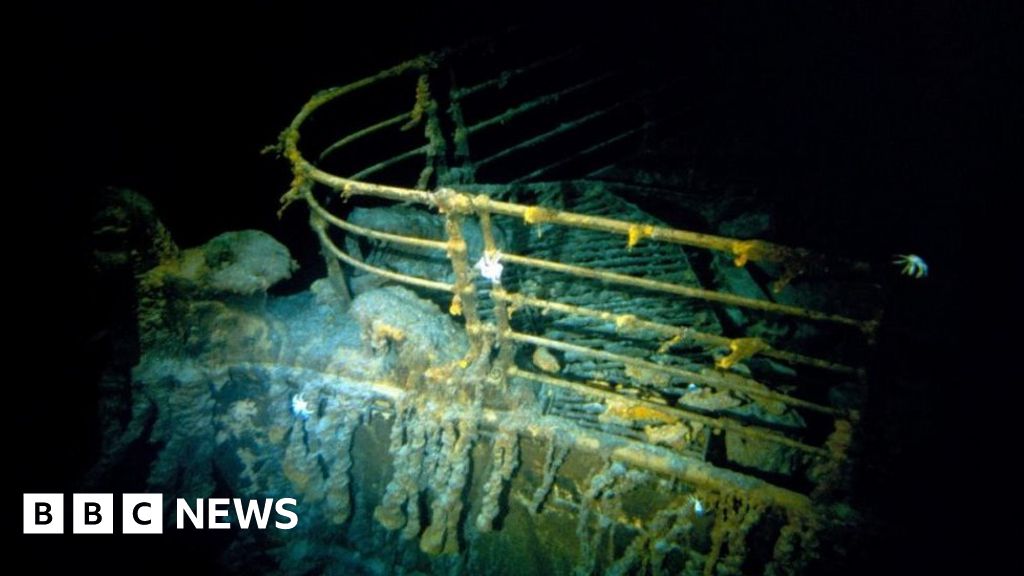
www.bbc.com
Titanic tourist submersible: Rescuers scan ocean as clock ticks
The US and Canada are urgently searching for a tourist submersible not seen since Sunday.
Science & Tech
Search teams are racing against time to find a tourist submersible that went missing during a dive to the Titanic's wreck on Sunday.
Five people were on board when contact with the small sub was lost about an hour and 45 minutes into its dive.
The rescue operation has continued overnight in the mid-Atlantic but so far there has been no sign of it.
The five on board include British businessman Hamish Harding, and father and son Shahzada and Suleman Dawood.
As of Monday afternoon, the US coast guard said the five crew members had roughly four days of oxygen left at most.
Businessman Mr Harding, 58 - a renowned explorer who has flown to space and holds three Guinness World Records - is aboard, and said at the weekend he was "proud to finally announce" he was part of the mission.
Another businessman Shahzada Dawood and his son, Suleman, who are British citizens, are also on board, their family said in a statement, as they asked that people "pray for their safety".
Also on board is French explorer Paul-Henry Nargeolet, 77, whose spokesman has confirmed to the BBC he was on board the missing submarine. Mr Nargeolet is a former French navy officer and diver, and also director of underwater research at a company that owns the rights to the Titanic wreck.
Spokesman Mathieu Johann said he hoped Mr Nargeolet's composure and military career would reassure the crew on board, even if the outcome of the operation did not depend on him.
And Stockton Rush, chief executive of OceanGate - the firm behind the dive - is also being widely reported to be the pilot on the vessel.
"Right now, our focus is on getting as much capability into the area as we can," Rear Adm John Mauger of the US Coast Guard told a press conference.
US and Canadian agencies, navies and commercial deep-sea firms are all helping the rescue operation, using military planes, a submarine and sonar buoys.
Titanic's wreck lies some 435 miles (700km) south of St John's, Newfoundland, though the rescue mission is being run from Boston, Massachusetts.
The US Coast Guard said research ship the Polar Prince - which is used to transport submersibles to the wreckage site and was the support ship on Sunday's tourist expedition - had conducted a surface search for the sub on Monday evening.
The missing craft is believed to be tour firm OceanGate's Titan submersible, which CBS journalist David Pogue travelled aboard last year to reach the wreckage of the Titanic.
He has told the BBC that when the support ship is directly above the sub, short text messages are able to be sent between the two.
Otherwise, communication via GPS or radio systems is not available as neither work underwater.
Mr Pogue said it was also not possible for those aboard the sub to escape by themselves because they are sealed inside by bolts applied from the outside.
A submersible vessel is different to a submarine. According to the National Oceanic and Atmospheric Administration, a submarine can launch itself into the ocean from a port independently, while a submersible has very limited power reserves so needs a mother ship that can launch it and recover it.
Rear Adm Mauger noted the area in which the search was taking place was "remote", making operations difficult.
Added to this is the fact that visibility is quickly lost below the surface of the water as light cannot penetrate far.
The OceanGate website lists three submersibles it owns, and only the Titan is capable of diving deep enough to reach the Titanic wreckage.
The vessel weighs 23,000 lbs (10,432 kg) and, according to the website, can reach depths of up to 13,100 ft.
Tickets cost $250,000 (£195,000) for an eight-day trip including dives to the wreck at a depth of 3,800m (12,500ft).
On social media at the weekend, Mr Harding said because of the "worst winter in Newfoundland in 40 years, this mission is likely to be the first and only manned mission to the Titanic in 2023".
He later wrote: "A weather window has just opened up and we are going to attempt a dive tomorrow."
OceanGate said it had "been unable to establish communications with one of our submersible exploration vehicles" but that its "entire focus [was] on the crewmembers in the submersible and their families".
"We are deeply thankful for the extensive assistance we have received from several government agencies and deep sea companies in our efforts to re-establish contact with the submersible," it added.
The company bills the eight-day trip on its carbon-fibre submersible as a "chance to step outside of everyday life and discover something truly extraordinary".
It sets sail from St John's in Newfoundland, with each full dive to the wreck, including the descent and ascent, reportedly taking around eight hours.
According to its website, one expedition is ongoing and two more have been planned for June 2024.
The Titanic, which was the largest ship of its time, hit an iceberg on its maiden voyage from Southampton to New York in 1912. Of the 2,200 passengers and crew onboard, more than 1,500 died.
Its wreckage has been extensively explored since it was discovered in 1985.
Read here:
























































